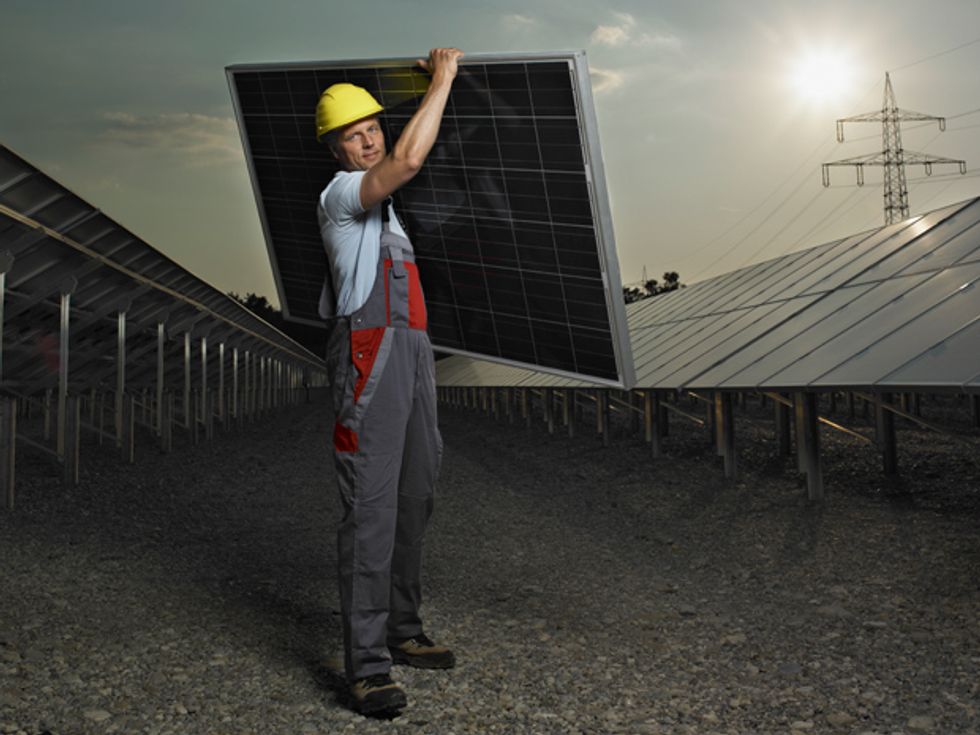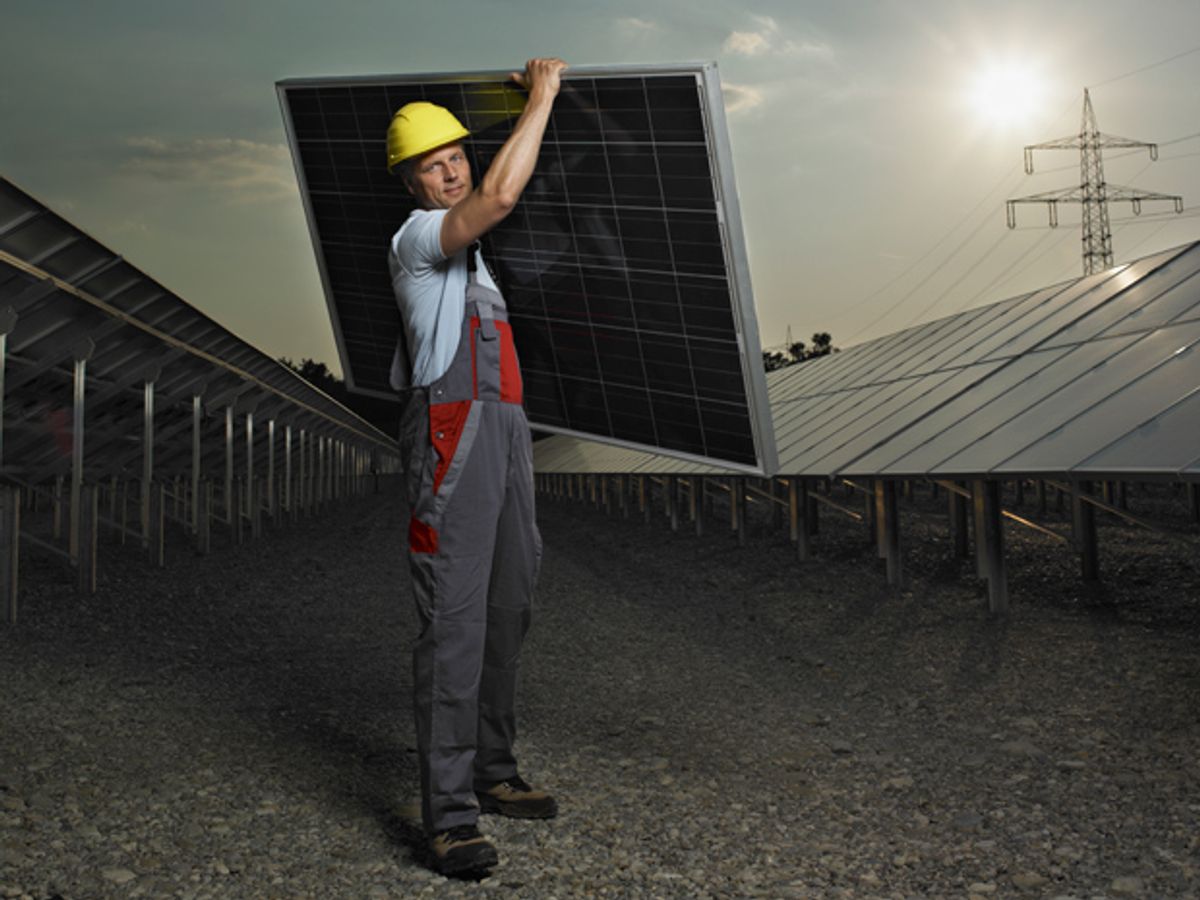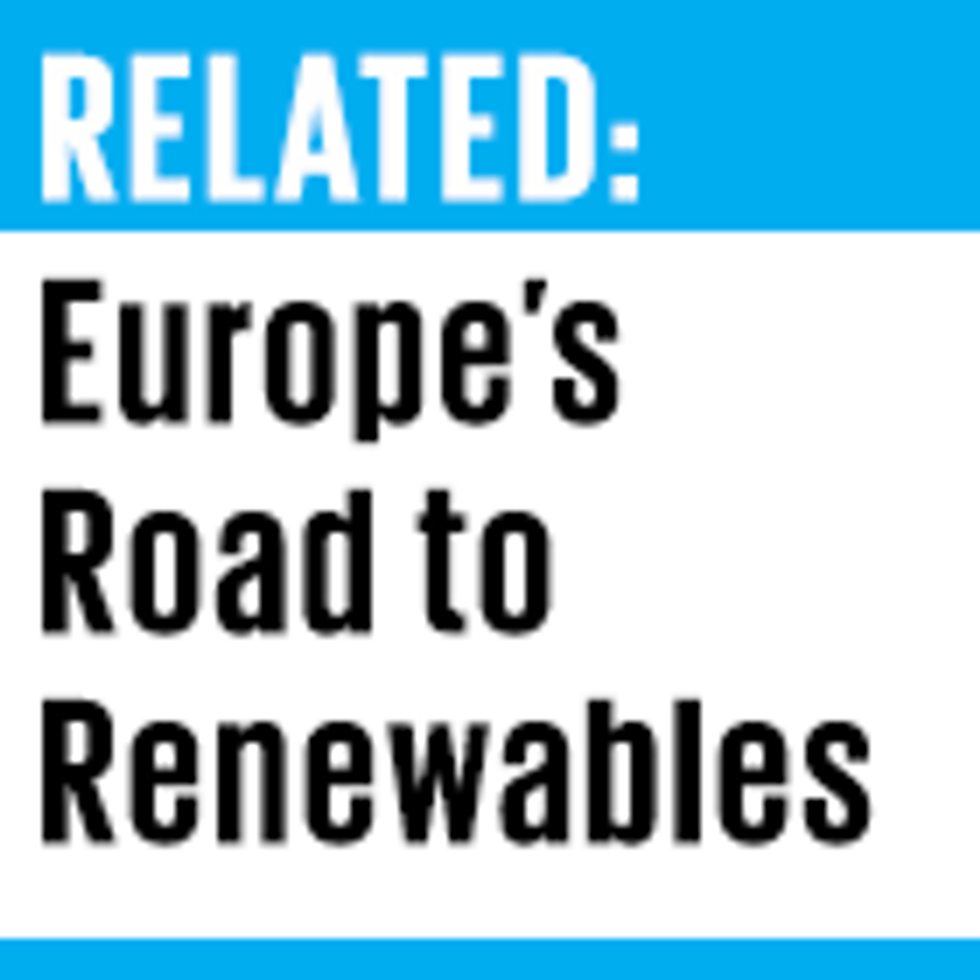
Among European countries, Germany is probably the best known worldwide for its Energiewende (“energy transition”), with good reason: Although it gets a smaller portion of its electricity from renewables than does Denmark, Portugal, or Spain, Germany generates more raw kilowatt-hours of electricity than any of those other countries do. What’s more, Germany has a far larger and more industrialized economy—the fourth largest in the world—and so its need for reliable power is greater. In 2014, wind, biomass, solar, and waste-to-energy plants met 24 percent of Germany’s electricity demand.
Most impressive has been Germany’s integration of more than 38 GW of solar PV, the largest solar capacity in the world, providing more than 6 percent of Germany’s electricity in 2014. A feed-in tariff enacted in 2000 simplified and streamlined the process for building solar and other renewable energy projects, connecting them to the grid, and selling power to the local utility at a fixed rate. This policy led to a rapid growth of solar and established a model that has been adopted by many other countries. The German power grid’s robust interconnections to the wider European grid also made the transition to renewables easier than in, say, Spain or Portugal. And in general, the German government’s support for renewables has been more stable and less susceptible to political whim than elsewhere.
However, the Energiewende has had some missteps. Even as Germany’s solar capacity was rapidly expanding, the country’s existing interconnection standards required that distributed generation facilities, including solar PV installations, automatically disconnect from the bulk grid if system frequency exceeded 50.2 hertz—a situation that can occur when power supply exceeds demand. Solar sometimes provides more than 40 percent of the country’s electricity needs at midday, so this standard could have resulted in vast amounts of PV capacity going off-line all at once.
As a remedy, Germany began requiring new frequency settings for all PV systems in 2012. This meant retrofitting at least 315,000 existing installations with smart inverters capable of automatically reducing power output during periods of overfrequency, at an estimated cost of 65 million to 170 million euros. As of August 2014, roughly half of these retrofits had been completed.
Germany must also deal with constraints with its own transmission grid. The current plan is to install up to 30 GW of wind capacity by 2020 in the northern half of the country, but getting this electricity to population centers to the south will require new transmission infrastructure.
Clouding the picture further, the new coalition government elected in 2013 has been more hostile toward renewable energy than its predecessors. Last August, a new German law put forward by Energy and Economics Minister Sigmar Gabriel took effect. Among other things, it excludes larger renewable energy systems from the feed-in tariff and levies surcharges on PV system owners who consume the electricity that their systems generate. This immediately reduced the rate of adoption of renewable energy, with new PV deployments falling from 3.3 GW in 2013 to under 2 GW in 2014. And so, while the Energiewende is not over, it has greatly slowed down.
About the Authors
Christian Roselund (@croselund) is the global content director for SolarPV TV. He previously covered the global solar industry for the trade publications pv magazine and SolarServer. John Bernhardt (@bernzzi) is the outreach and communications director for the Clean Coalition.
To Probe Further
For statistics on solar- and wind-generated electricity in Germany in 2014, see the PowerPoint slides [pdf] by Bruno Burger of the Fraunhofer Institute for Solar Energy Systems. For a more complete breakdown of Germany’s renewable energy sector over the last 25 years, see this table (in German) by the Working Group on Energy Balances.
For a discussion of Germany’s retrofitting of its solar PV inverters, see the executive summary of “Impact of Large-scale Distributed Generation on Network Stability During Over-Frequency Events & Development of Mitigation Measures” [pdf], by engineers at the University of Stuttgart’s Institute of Combustion and Power Plant Technology and the consulting firm Ecofys.




